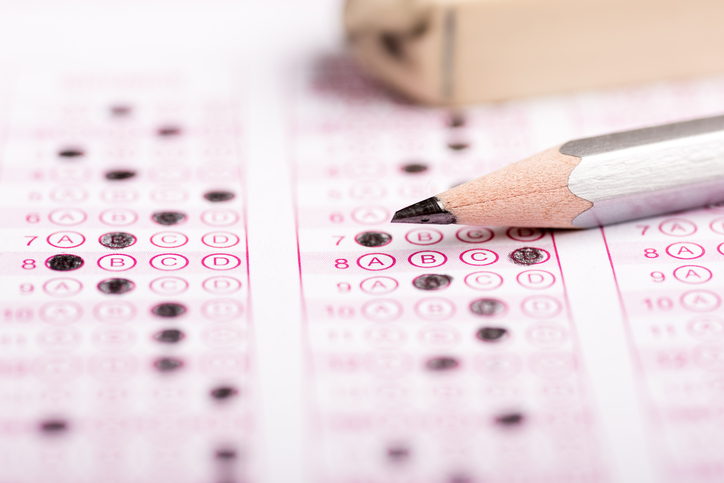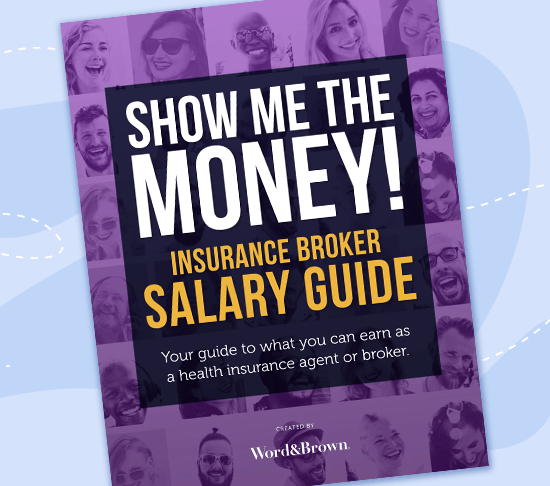You’ve decided you’re interested in a new career as a health insurance broker. That’s terrific. To sell insurance in California (or Nevada), you will first need to pass a test to get your Life/Accident & Health Agent insurance license, which gives you the ability to sell life, health, and related products.
Getting Started
Before earning your license, you’ll want some training. In fact, California and Nevada require the completion of at least 20 hours of approved pre-licensing study. Additional hours may be required for certain licenses. Code and ethics hours are also required by both states.
You can select from a diverse roster of education providers to help you prepare for your exam and earn your required training hours. In California, the Department of Insurance (CDI) website lists more than 30 resources. Nevada license candidates can look up providers here.
A background check and fingerprinting are also required in connection with your application for an insurance license. Details on California’s fingerprinting guidelines are available here; information on Nevada’s requirements can be found here.
Scheduling Your Exam
To schedule your license exam in California, you need to visit the Producer Licensing Bureau’s website or call them about scheduling your insurance exam. The street address, online address, and phone number are:
CDI Producer Licensing Bureau
320 Capitol Mall
Sacramento, CA 95814
Phone: (800) 967-9331
Website: www.insurance.ca.gov
The CDI is contracted with PSI Services LLC (PSI) to conduct its examination program. PSI provides examinations through a network of computer examination centers across the state, including the CDI’s three existing sites.
To schedule a California exam online or by phone, or to get answers from PSI to questions about the exam, visit the PSI Exam home page at https://candidate.psiexams.com/index.jsp or call (877) 392-6422.
Nevada license candidates must apply online by accessing the Nevada Division of Insurance website at www.doi.nv.gov. Once you have submitted your application online, you should log back in to the application system using your candidate transaction number to attach supporting documentation. Be sure you review all required materials and fees carefully before your submission. Licensing fees are not refundable.
After creating a Nevada DOI account, candidates must go to www.pearsonvue.com/nv/insurance to make an online reservation for an examination.
Exam Tips
Here are some helpful suggestions when you go to take the test.
Read Every Answer
Don’t select the first response that looks correct – read them all. You may find there’s another answer that is MORE correct. NEVER pick an answer you have not heard of or read. The people who write the insurance exam questions have been known to make up words that do not even exist and use them as available answers. If something was not covered in your training class, it is not going to be a correct answer on the state insurance licensing exam. Remember, there’s always one best answer, although some others may seem to fit the question (or be partially correct).
Don’t Read Too Much into the Questions
Your brain can rationalize anything, including reasons or situations where an incorrect answer might be correct. Pick out the one best answer and move on.
Watch Out for “Double Negative” Questions
Keep a sharp eye open for the words “not,” “except,” “unless,” and “until.” They may be printed in ALL CAPS, and they mean you have to look for a response that is NOT correct. (For example, “None of the following are true EXCEPT . . .” or “Which of the following is NOT unethical?”)
Use Double Negative Questions to Your Advantage
Some of the double negative format questions can be useful because they give you three true statements that may help you answer another question later in the exam.
Remember the True/False Technique
Treat each multiple-choice insurance exam question as if it were four “true/false” questions. Take each in turn and ask, “Is this response true or false?” This technique can be useful in eliminating incorrect answers.
Synonymous Answers
If two answers mean the same thing, eliminate them both. You now have a 50/50 chance on the question.
Contradictory Answers
If two answers are the exact opposite of one another, pick one of them. You now have a 50/50 chance on the question. Whatever the question is asking, if two answers contradict each other, one of them is correct. That’s just how a multiple choice question works.
Eliminate Definitive Answers
Unless you KNOW an answer is correct, eliminate answers with definitive words like:
- Must
- Always
- Never
- Will
- Only
A definitive word is problematic as a correct answer on a multiple-choice test. There is almost always an exception to any rule! Go with answers that are less definitive and may include:
- Usually
- Typically
- Generally
- With the permission of
- Commonly
Don’t Spend Too Much Time on Any Single Question
If you are not sure of the answer, either mark the question for review and come back to it after you have finished the rest of the examination – or eliminate the responses you know are wrong, and then make your best guess. (You may even find another question on the exam later that provides the answer.)
Don’t be scared to guess, you can miss a few questions and still pass the exam! DO NOT review the full exam once you have completed it. If you do, you may get nervous, confused, start second-guessing yourself, and start changing your answers.
Slow Down!
Remember, you’re trying to pass an examination, not win a speed reading contest. You will have plenty of time to complete the exam, and there is no extra credit for finishing early. Most people report having close to an hour remaining when they finish. It is rare that anyone runs out of time.
First Thoughts Are Usually Best
This is the number one rule. Go with your “gut instinct.” If one answer feels right or sounds right, pick it. If you have studied properly, that answer feels right for a reason – you may have just read it in the online insurance license textbook, heard it in the audio, or seen it in the video.
On the Day of Your Exam
You must arrive at least 30 minutes prior to your scheduled appointment time. This allows for your check-in and identification verification; it also ensures you have time to familiarize yourself with the examination process.
If you arrive late, you may not be admitted to the examination site and you may forfeit your examination registration fee. Even though candidates will be thumb-printed, you are still required to comply with any identification requirements established by the exam authority.
Please take at least one form of identification with you when you go for your test.
In California, the following are “accepted” forms of photo ID:
- Current California driver’s license
- California Identification Card
- A current out-of-state driver’s license
- Passport
- Passport Card
- Military Identification
- Employment Authorization Card
- Permanent Resident Card
- Veteran Health Identification Card with photo
In Nevada, the state accepts similar forms of primary ID. Nevada’s exam administrator, Pearson VUE, does not recognize grace periods. For example, if your driver’s license expired the day before the exam and the issuing state allows a 30-day grace period for renewal, the ID is considered expired.
More About the Exam
Again, it’s recommended you arrive at least 30 minutes prior to your scheduled exam.
In California, you’re allowed up to 1.5 hours to complete the 75-question exam for the Life-Only Agent license or the Accident & Health Agent license. The combined Life, Accident, and Health Agent license exam is 150 questions and lasts up to three hours.
n Nevada, the Life exam is two hours, which includes 1.25 hours for general information testing and .75 hour for state-specific testing. The Health license testing is 2.25 hours, which includes 1.25 hours for general testing and one hour for Nevada-specific questions.
A Word About Cheating – Don’t
Cheating on your insurance licensing exam is a crime, punishable by law – including, in California, up to a year in prison and a $10,000 fine.
Forms of cheating include:
- Open workbooks
- Cheat sheets
- Electronic devices not turned off or away in bags/left in car
- Removal of CDI or DOI materials from a testing room
- Looking at another examinee’s computer monitor during the exam
- Gifts for examination proctors
- Using someone else’s ID (or having someone else take the exam for you)
- Reviewing study material in the restroom during examination
- Contact with another individual during a restroom break
- Leaving the room without notifying an exam proctor
- Leaving for the restroom longer than five minutes
Questions?
If you have questions about California licensing, call the Licensing Hotline at (800) 967-9331 or go online. For more information on Nevada licensing procedures, visit the Division of Insurance website or call (775) 687-0700.




